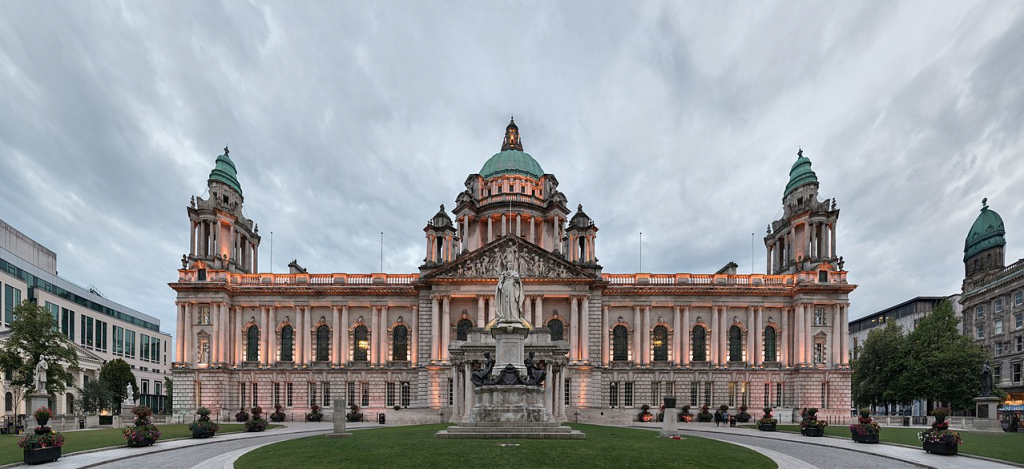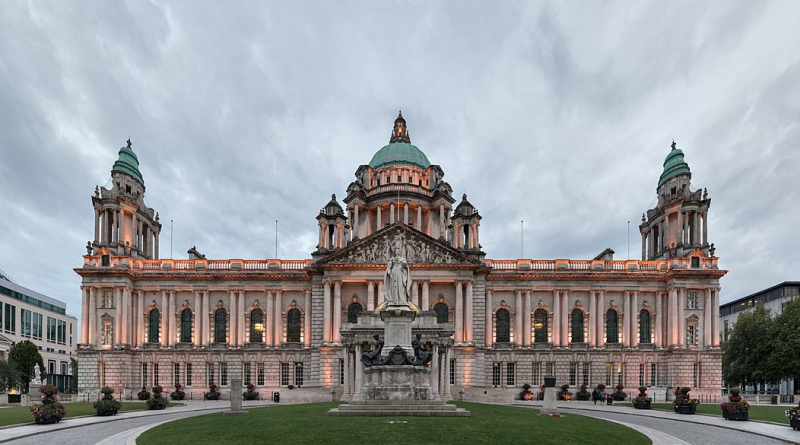Regional devolution for Northern Ireland: What’s the big deal?

On 26 March 2019, the Secretary of State for Northern Ireland (NI) signed an agreement between the United Kingdom (UK) Government, the NI Civil Service and six of the 11 NI district councils. This gave the green light for the first UK City Deal based in NI, the Belfast Regional City Deal (BRCD).
This blog article briefly outlines the UK City Deals project and summarises key elements of the BRCD.
What are UK City Deals?
UK City Deals are bespoke packages of funding and decision-making powers negotiated between the UK Government and local authorities across England, Scotland, Wales and NI. The idea is that central government devolves powers to local government, thus making local politicians more accountable for decision-making processes in the local communities.
This notion of local/regional devolution was formally introduced in 2011 by the UK Government in its consultation document Unlocking Growth in Cities. That document specifically outlined the creation of, and function of, City Deals, stating:
The Coalition Government will be working with different cities over the coming months to agree a series of tailored ‘city deals’. These will consist of new powers for cities, enabling civic and private sector leaders to influence the key decisions that affect their economic competitiveness; and/or innovative projects to unlock growth in each area.
Economic rationale
The UK City Deals project aims to increase the economic prosperity of certain regions of the UK by promoting a range of measures and projects designed to increase the skills, productivity and competitiveness of each region. Each project within a deal is measured against certain economic challenges and foundations, as specified in the UK Industrial Strategy. It is also important to note that the majority of UK City Deals involve the wider regions around the city areas, and are essentially regional in nature. This is particularly relevant in NI, Scotland and Wales.
First wave of UK City Deals
The first wave of UK City Deals was launched in 2012; it covered eight of the largest cities in England (outside London) and their wider economic areas. For example, the Bristol deal included the Bath and North East Somerset, City of Bristol, North Somerset, South Gloucestershire areas. Details of the first City Deals wave are available in the Cabinet Office publication Unlocking Growth in Cities: City Deals – Wave 1.
Second wave of UK City Deals
In October 2012 as part of the second wave of City Deals, the UK Government invited 20 cities in England and their surrounding areas to compete for the opportunity to negotiate a City Deal. These included Coventry, Sunderland and Swindon. Details of the second wave of City Deals are available here.
Enter Scotland and Wales
In 2014, Glasgow and the Clyde Valley became the first non-English area to negotiate a City Deal. This was followed by Cardiff in March 2016. More details of City Deals in Scotland and Wales are available here.
Enter NI: The Belfast Region City Deal
Timeline
On 22 November 2017, the UK Government’s Autumn Budget Statement announced the following:
Upon restoration of a Northern Ireland Executive, the government will open negotiations for a city deal for Belfast as part of the government’s commitment to work towards a comprehensive and ambitious set of city deals across Northern Ireland to boost investment and productivity.
Following this statement, Belfast City Council and its district council partners began working with stakeholders, including politicians, private sector organisations, universities and colleges, to develop projects in readiness for a City Deal submission. This work culminated on 28 September 2018, with the BRCD partners submitting a final list of projects to the NI Secretary of State.
Following this, on 29 October, as part of the 2018 Autumn Budget, the UK Chancellor announced a £350 million(m) investment for the BCRD. Five months later, on 26 March 2019, the Secretary of State signed a Heads of Terms document, giving the ‘go ahead’ for the BRCD.
Key decision-makers
The BRCD is to be managed by a Programme Board, comprising the Chief Executives of the six council partners, senior NI civil servants and the Vice Chancellors of Queen’s University Belfast and Ulster University.
The six district council partners are:
- Antrim & Newtownabbey;
- Ards & North Down;
- Belfast;
- Lisburn and Castlereagh;
- Newry, Mourne & Down; and,
- Mid & East Antrim.
They will work in partnership with Queen’s University Belfast, Ulster University, Belfast Metropolitan College, Northern Regional College, South Eastern Regional College and the Southern Regional College.
Investment pillars
The BRCD partners identified key economic target areas in the region meriting investment. Those areas are named in the BRCD literature as the ‘investment pillars’, i.e.:
- Innovation and digital;
- Tourism led regeneration; and,
- Infrastructure.
BRCD targets
The BRCD aims to create up to 20,000 new jobs within the region, with an annual Gross Value Added (GVA) impact of £470m. Moreover, within the region, it seeks both to boost tourism and to develop infrastructure, with the overall aim of enabling the region to become self-sufficient and become a driver for a rejuvenated NI economy.
Challenges and growth sectors
The BRCD Heads of Terms document identifies key challenges for economic growth in NI, such as poor productivity, high economic inactivity and a potential skills gap in the current labour market.
The document also highlights certain sectors of the NI economy in which the BRCD region has a competitive advantage, consequently making it particularly worthy of investment. The document refers to these as ‘targeted growth sectors’.The BRCD partners explain those sectors as follows:
At the heart of our City Deal vision is a drive to deliver inclusive growth and to focus efforts on areas in which we can become genuinely world-class; namely digital / ICT, life and health sciences, creative industries, advanced manufacturing and tourism.
The sectors are named as follows:
- Financial, Business and Professional Services;
- Digital and Creative Technologies;
- Agri-Food;
- Advanced Manufacturing, Materials and Engineering;
- Life and Health Sciences;
- Tourism; and,
- Construction and Materials Handling.
As noted earlier, the BRCD’s stated aim is to transform the region’s economy by facilitating investment in the stated sectors.
The projects
The BRCD consists of 22 projects, each designed to transform the region’s economy. Organised under the investment pillars, the projects are underpinned by an overall investment in employment and skills.
Table 1 briefly summarises the key BRCD projects; information on all 22 BRCD projects is available here.
| Investment Pillar | Project | Project Summary |
| Innovation and Digital | The Global Innovation Institute | A cross-disciplinary digital innovation hub organised by Queen’s University’s Global Research Institutes with the aim of expanding hi-tech companies from 200 to 600. |
| The Centre for Digital Healthcare Technology | A centre for digital technology and associated laboratories in the areas of cardiology, diabetes, respiratory and stroke. | |
| Advanced Manufacturing Innovation centre | Bridge between academia and industry to facilitate new manufacturing technologies. | |
| Tourism led Regeneration | Belfast Destination Hub | A multi-venue destination, where visitors can explore the culture of the city. |
| Games of Thrones Legacy Attraction | The film set of Winterfell in Moneyglass is to be transformed into a visitor centre. | |
| Bangor Waterfront regeneration | The coast from Ballyholme beach to Bangor Marina is to be regenerated. | |
| Infrastructure | Belfast Rapid Transport | Phase II of the scheme to improve connections between North and South Belfast. |
| Southern Relief Road | Route that will connect the A1 Belfast and Eastern seaboard corridor with the A2 Warrenpoint dual carriageway. |
Table 1: Summary of key BRCD projects
Who is going to pay for the BRCD projects?
In relation to funding arrangements, the BRCD Heads of Terms document states the following:
This document sets out the commitments of the UK Government and Belfast Region City Deal (BRCD) partners to invest up to £500 million in the Belfast Region City Deal.
The £500m is broken down as follows. The UK Government is to commit £350m over a 15-year period from 2019/20, to support projects in the digital and innovation investment pillar. This is to be matched with a joint funding commitment of £50m by the BRCD university partners. The remaining £100m refers to commitments by the six BRCD council partners in the Tourism and Regeneration investment pillar.
The Heads of Terms document also states that full delivery of the BRCD requires the NI Executive to match the £350m investment by the UK Government. Given the current absence of a functioning NI Executive, apparent uncertainty arises in relation to the timeline for the BRCD’s full implementation.



